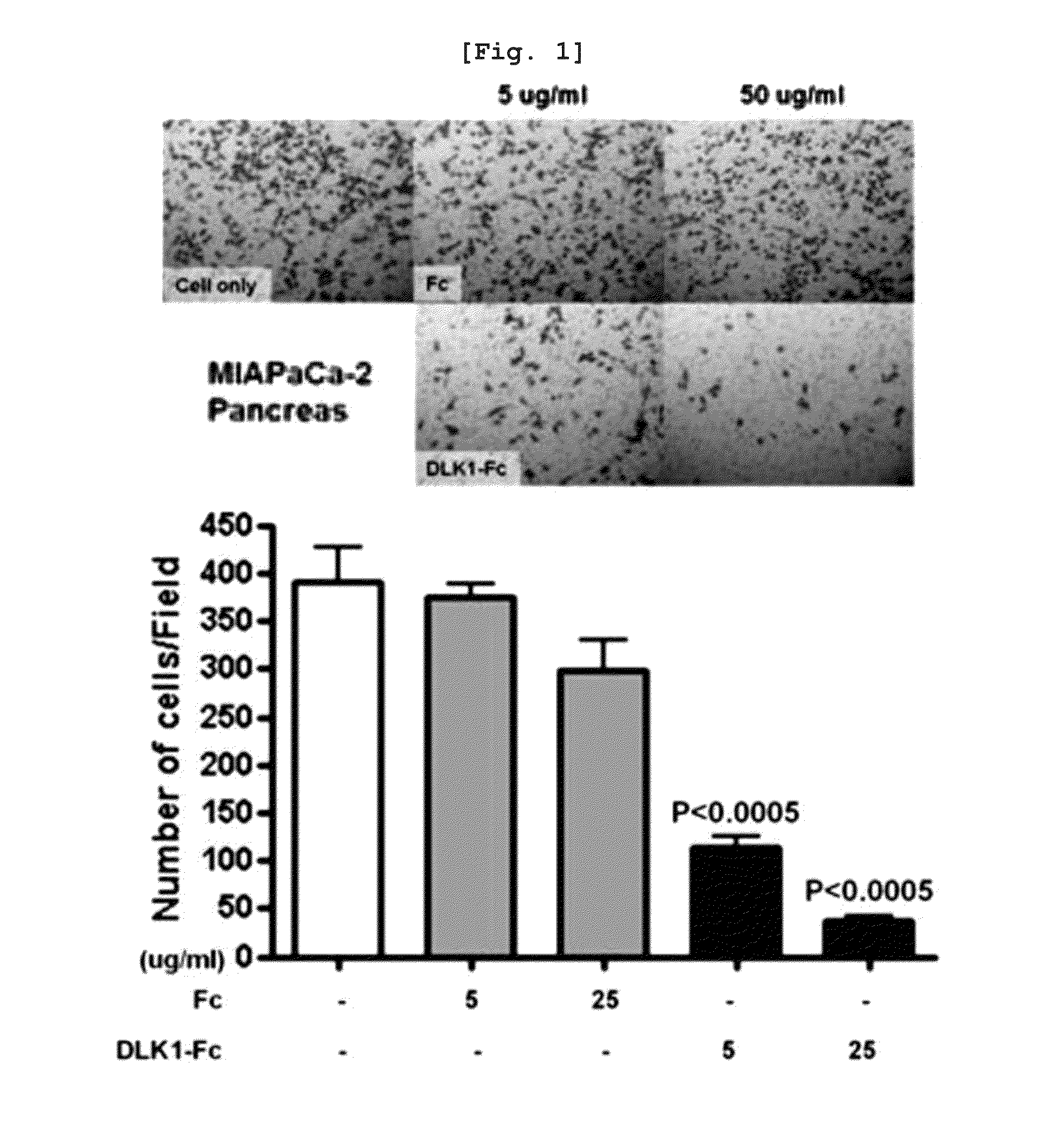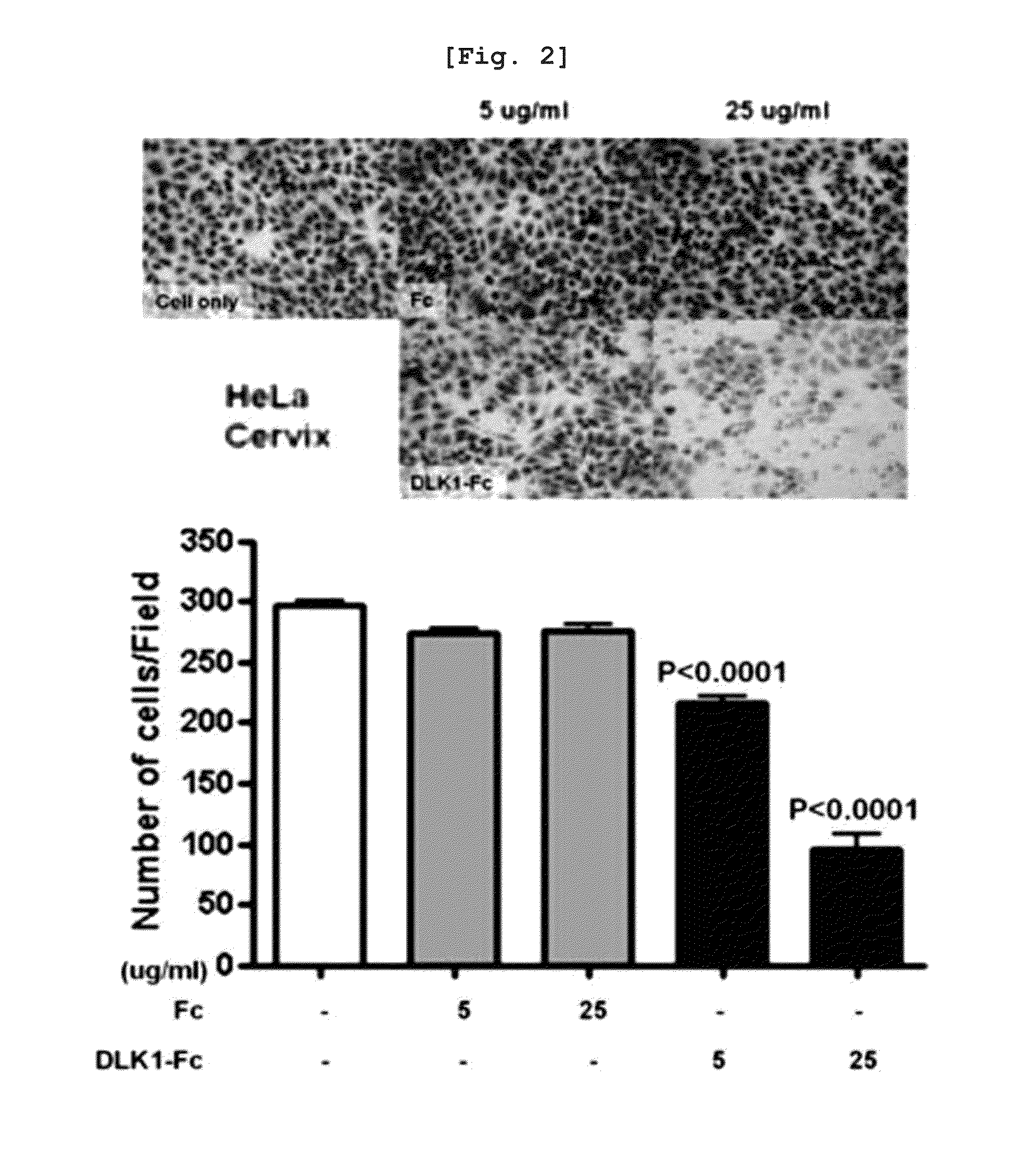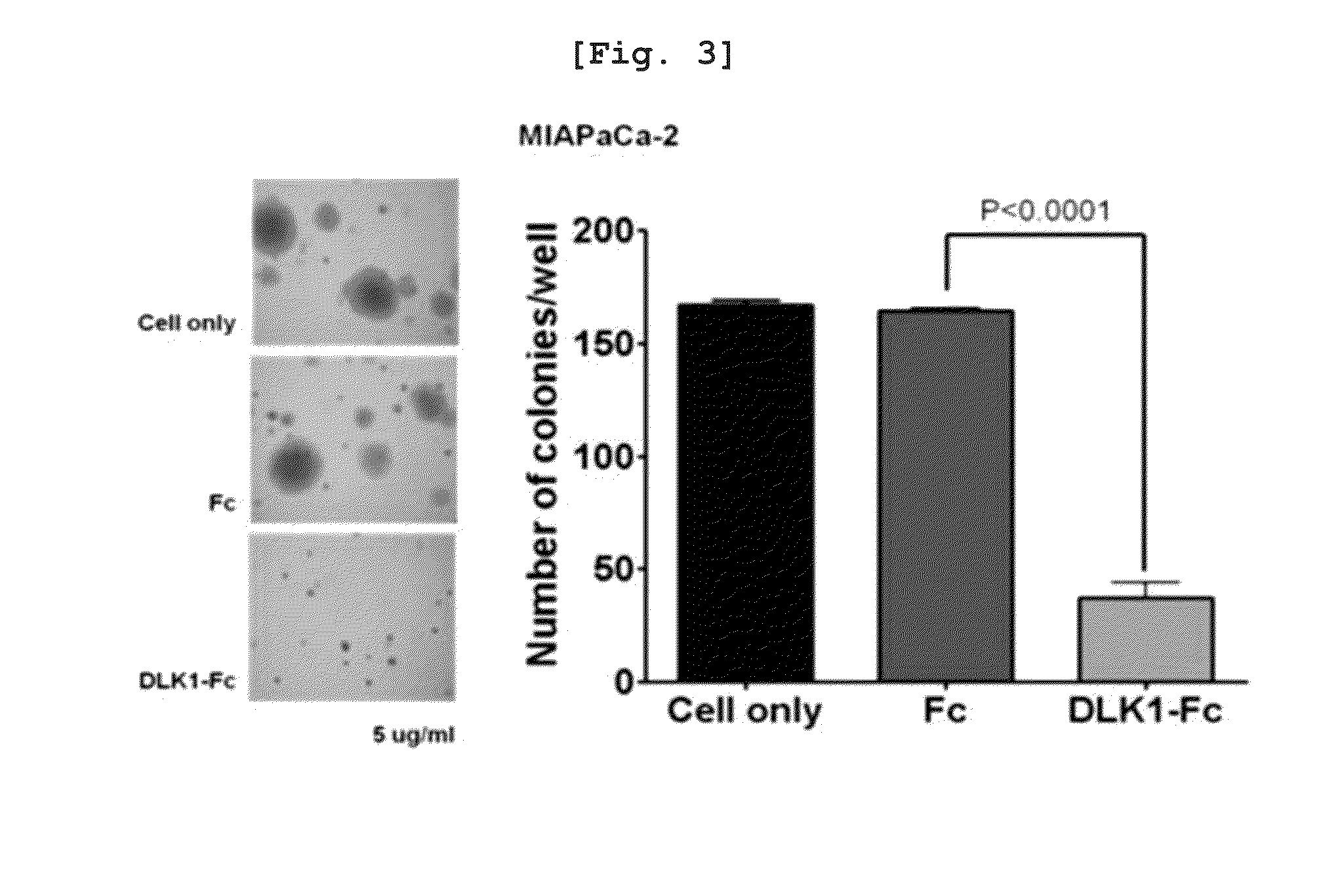Activin Receptor Type II B Inhibitors Comprising DLK1 Extracellular Water-Soluble Domain
a technology of activin receptor and extracellular water, which is applied in the direction of drug composition, peptides, metabolic disorders, etc., can solve the problems of pain in patients, and the type of mechanism that affects the anti-cancer action of the extracellular water-soluble domain of dlk1, and achieve the suppression of signal transduction of a protein involved in the binding of ligands
- Summary
- Abstract
- Description
- Claims
- Application Information
AI Technical Summary
Benefits of technology
Problems solved by technology
Method used
Image
Examples
reference example 1
Preparation of Water-Soluble DLK1 and DLK1-Fc Fusion Protein
[0117]An extracellular water-soluble domain of DLK1(herein after, referred to as a “water-soluble DLK1”) and a DLK1-Fc fusion protein (hereinafter, DLK1-Fc) in which water-soluble DLK1 and a human antibody Fc region are joined, which were used in Example of the present invention, were prepared by the method disclosed in Korean Patent No. 10-0982170.
example 1
Confirmation of Inhibitory Effect of Water-Soluble DLK1 on Cancer Migration
[0118]To examine an effect of water-soluble DLK1 on cancer cell lines, a migration assay for cancer cell lines was performed using the method disclosed in Reference (Chen H C, Methods in molecular biology. 294:15-22, 2005). First, when cells (MIA-PaCa-2, HeLa cell line) were grown approximately 50%, a medium was changed with a serum-free medium, cells were detached by treatment with trypsine after 24 hours, and cells were counted. The cells, serum-free medium, and each protein to be treated were mixed to have a total volume of 100 μl, and then incubated at 37° C. for 1 hour. 1 ml of 5˜10% FBS was put into a 24-well plate as a chemo-attractant, a transwell (Corning #3422) having a 8.0 μm pore was put thereon, 100 μl of a solution of mixing pre-cultured cells, cells, and proteins was added for 1 hour, and then the resulting mixture was incubated in a carbon dioxide incubator at 37° C. for 24 to 48 hours. After ...
example 2
Confirmation of Effect of Water-Soluble DLK1 on Anchorage Independence Growth in Cancer Cell Lines
[0120]To examine an effect of water-soluble DLK1 on anchorage independence growth, a soft agar assay was performed. First, after an RPMI medium containing 10% FBS and 1% agar were mixed in a ratio of 1:1 and plated on a 60 mm petri dish to have a agar content of 0.5%, 6×103 of cells (MIA-PaCa-2, HeLa cell line) were mixed with 5 μg / ml of DLK1-Fc or Fc, and an RPMI medium containing 10% FBS and 1% agar were mixed to have a final content of agar of 0.3%, and then plated on the 0.5% agar. The cells were incubated in a CO2 incubator at 37° C. for 3 weeks, and a medium containing 5 μg / ml of DLK1-Fc or Fc was added every three days to prevent dryness of the agar. After colonies were generated, the colonies were dyed with 0.05% crystal violet and quantified, which are shown in FIGS. 3 and 4.
[0121]As a result, when DLK1-Fc was treated to a pancreatic cancer cell line, MIA-PaCa-2, it can be know...
PUM
| Property | Measurement | Unit |
|---|---|---|
| total volume | aaaaa | aaaaa |
| concentration | aaaaa | aaaaa |
| temperature | aaaaa | aaaaa |
Abstract
Description
Claims
Application Information
 Login to View More
Login to View More - R&D
- Intellectual Property
- Life Sciences
- Materials
- Tech Scout
- Unparalleled Data Quality
- Higher Quality Content
- 60% Fewer Hallucinations
Browse by: Latest US Patents, China's latest patents, Technical Efficacy Thesaurus, Application Domain, Technology Topic, Popular Technical Reports.
© 2025 PatSnap. All rights reserved.Legal|Privacy policy|Modern Slavery Act Transparency Statement|Sitemap|About US| Contact US: help@patsnap.com



